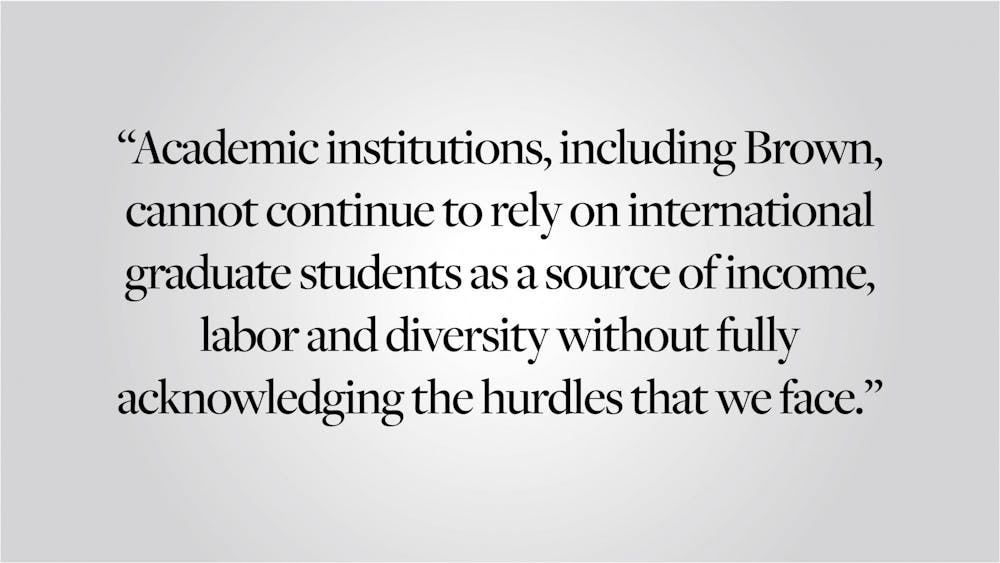Students from around the world dream of completing their PhD education in the United States, where many believe strong programs abound and lead to more job opportunities. According to a National Science Foundation report, in 2017, almost half of the graduate students in the natural sciences and engineering were international, as were more than 60% in computer science and mathematics. Although international students make up a significant proportion of the graduate student population in the United States, academic institutions could do more to recognize and address the unique challenges that they face. American colleges and universities have long looked to international students to bring diversity to their campuses, but once they arrive, they can feel isolated due to logistical hurdles, visa constraints and an overall lack of support in navigating these challenges.
International students obtaining a STEM PhD face financial challenges distinct from their domestic peers. Brown’s administration requires that graduate student payroll be paid through direct deposit, with no option for physical checks. The deadline for students to set up direct deposit was at the start of September, just a few days after most international students arrived on campus. Most banks, however, require a social security card — which takes nearly two weeks to receive — to open an account. As such, many students could not deposit the $1,200 transitional stipend that PhD students at Brown receive in mid-September to help alleviate the financial burden of moving, thereby leaving them without income in the face of impending bills until Oct. 1, the next pay day.
Beyond the structural barriers created by university administrations, the constraints of visa enrollment limit international students’ agency. These constraints condition international students’ ability to stay in the country on maintaining good academic standing and full-time enrollment. If a student fails to meet the requirements, they must leave the country within 60 days. This means that international students are not afforded the safety net available to domestic students, who can drop a course, take a leave of absence for medical, personal or family reasons or leave the program altogether if they decide it is not the right fit for them. These privileges afford domestic students control over their futures that international students lack. International students have zero leverage. This situation creates a power dynamic that can be easily exploited in graduate programs, as international students may be pushed to be more productive and end up working unreasonable hours out of fear of losing their visas.
Despite these exceptional stresses, international students have been found to be less likely to seek mental health treatment than domestic students. While international students are just as likely as domestic students to report “an emotional or stress-related problem that significantly affected their well-being or academic performance,” they were less likely to have used — or to even have been aware of — mental health services. This disparity can partially be attributed to cultural differences. Justin Chen, co-founder of Massachusetts General Hospital’s Center for Cross-Cultural Student Emotional Wellness and an assistant professor at Harvard, has studied how a cultural belief among Chinese students that mental health disorders are born out of personal weakness rather than illness contributed to various barriers to seeking treatment.
Academic institutions, including Brown, cannot continue to rely on international graduate students as a source of income, labor and diversity without fully acknowledging the hurdles that we face, and more sufficiently helping us overcome them. When determining policy, Brown should consider the logistical challenges unique to international graduate students, and actively provide aid in navigating them. Expanding counseling to include personnel versed in the language and cultures of their international students is another starting point. International students comprise 40% of the graduate student population at Brown, making Brown’s continued academic excellence heavily reliant upon our contributions. It’s time the University recognize it.
Selahaddin Gumus GS can be reached at selahaddin_gumus@brown.edu. Please send responses to this opinion to letters@browndailyherald.com and op-eds to opinions@browndailyherald.com.





